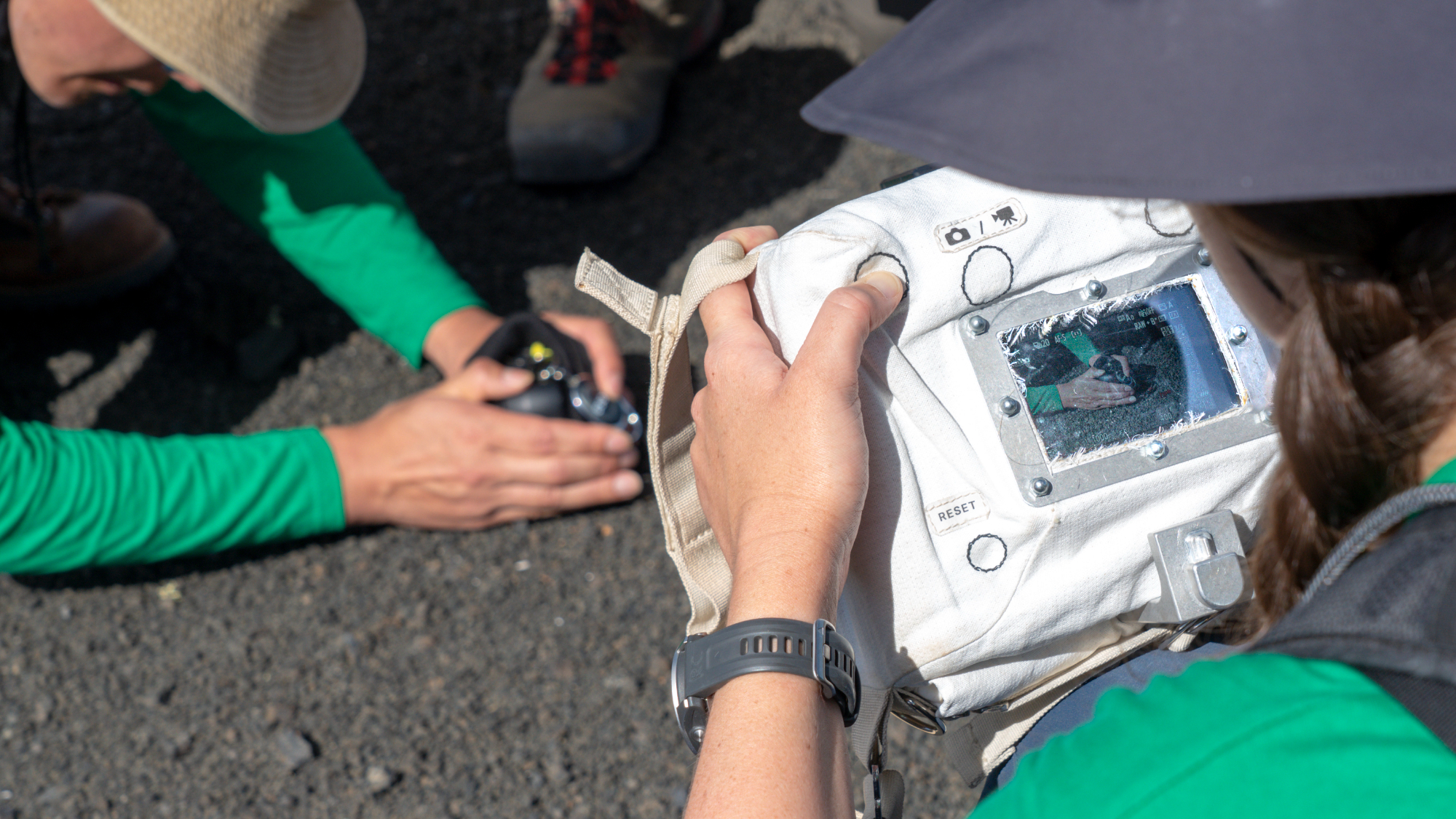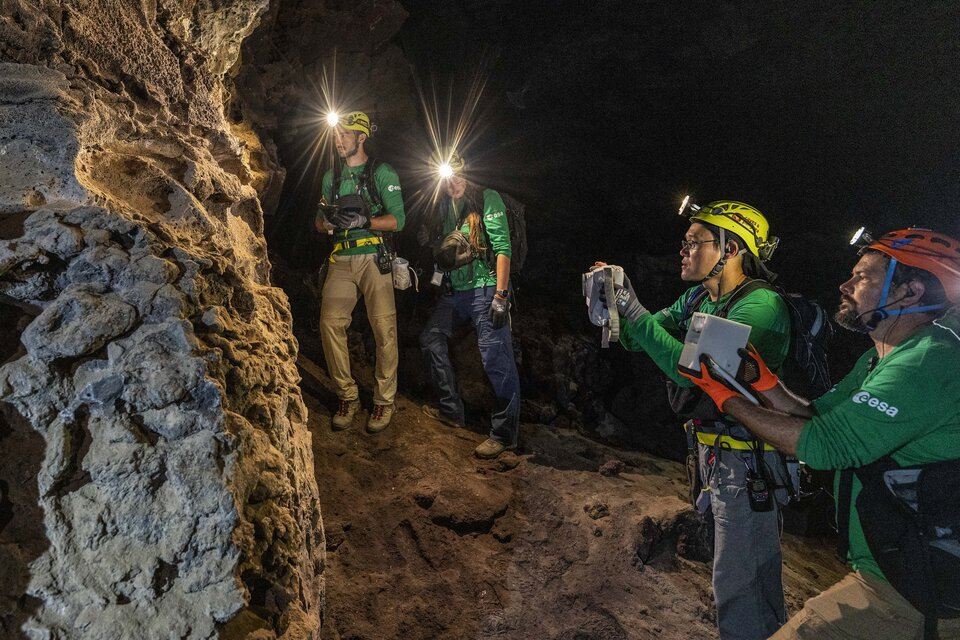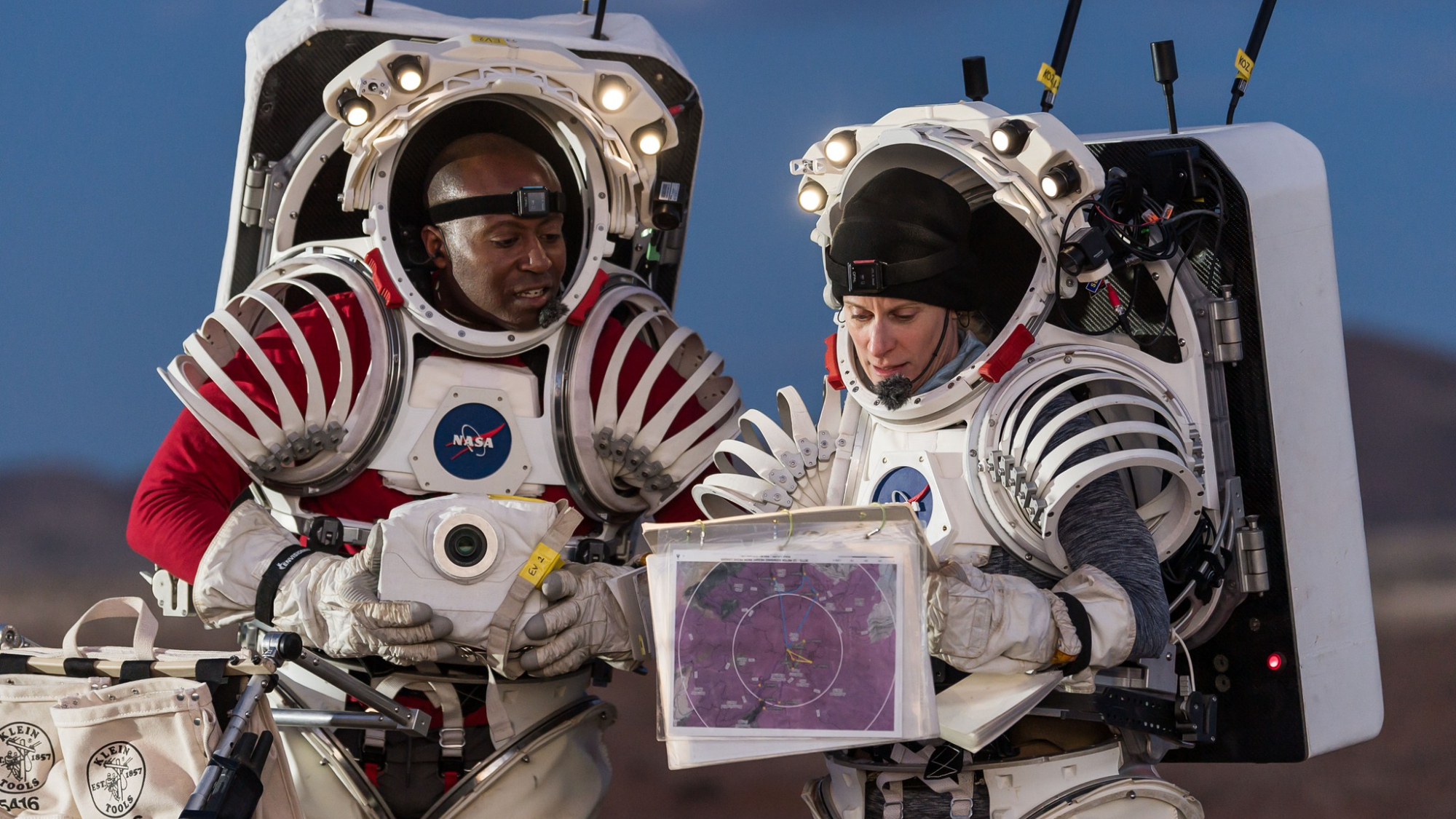New Artemis moon camera gets 1st field test (photos)
'The camera captured a great amount of detail in both shadowed and highly illuminated areas.'

NASA's Artemis 3 mission is slated to launch in September 2026, sending four astronauts to the moon's south polar region.
Those explorers — and their colleagues on subsequent Artemis missions — will carry out a number of research projects, gathering data that will help scientists better understand the origin, history and evolution of the moon.
Part of the toolkit for the Artemis astronauts will be the Handed Universal Lunar Camera (HULC). Recently, an international team of engineers, scientists and astronauts took HULC out for a test drive in lunar-like scenarios to help improve the camera's design for its future moon missions.
The testing was conducted as part of the European Space Agency's (ESA) PANGAEA geology training in Lanzarote, Spain.
Related: NASA's Artemis program: Everything you need to know
Conditions on the moon are vastly different to those on Earth, so HULC sports a number of new features to help ensure that it can function properly. For example, it has a thermal blanket developed by NASA to protect it from the lunar surface's dust and extreme temperatures, which can range from minus 330 to 248 degrees Fahrenheit (minus 200 to 120 degrees Celsius).
The camera's buttons are also accessed on a new NASA-designed grip that allows handling by astronauts wearing thick, cumbersome gloves during moonwalks.
Breaking space news, the latest updates on rocket launches, skywatching events and more!
Electronics on the moon also have to deal with an increased radiation environment, which means the camera is outfitted with modified electrical components.
Recent research, using data gathered during the Apollo program, has shown that astronauts' perception of distances and slopes on the moon are altered, which can affect how they make decisions about what regions to explore on the lunar surface. Being able to zoom in on features of the landscape with the new Artemis camera may help guide this process.
"If the crew wants to see farther beyond the landing site, a telephoto lens would allow them to take images of distant objects and decide which way to explore," Jeremy Myers, NASA's lead for the HULC camera, explained in a press release.
The team used the camera in broad daylight as well as in dark caves to emulate some of the conditions astronauts might run into on the moon.
"We used a flash for the first time in a lava tube with Norishige Kanai, who has been to the International Space Station and was familiar with the challenges of taking pictures during spacewalks," said Myers.
PANGEA is a program that helps astronauts build skills to be better field scientists, and capturing images on the lunar surface will be a key aspect of documenting scientific discoveries during Artemis missions.
"The camera captured a great amount of detail in both shadowed and highly illuminated areas — something of paramount importance on the moon, considering the high variability of illumination conditions on the lunar surface," Matteo Massironi, a PANGAEA planetary geologist, said in the same press release.
"We spent a lot of time in the lab with the camera, thinking about what the challenges could be, but only when we test it in a realistic scenario can we broaden our perspective and improve the design. Every time we collaborate with ESA's PANGAEA, we get even more out of it than we had expected," said Myers.
You can check out some of the shots researchers took with HULC in Spain here.

Conor Feehly is a New Zealand-based science writer. He has earned a master's in science communication from the University of Otago, Dunedin. His writing has appeared in Cosmos Magazine, Discover Magazine and ScienceAlert. His writing largely covers topics relating to neuroscience and psychology, although he also enjoys writing about a number of scientific subjects ranging from astrophysics to archaeology.


